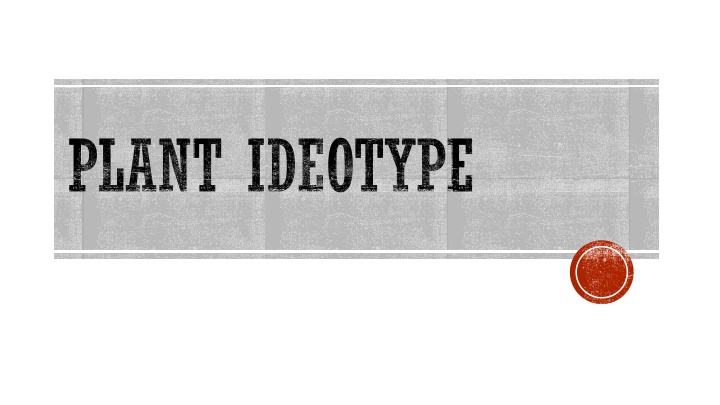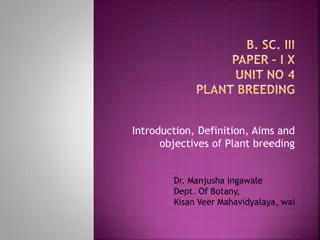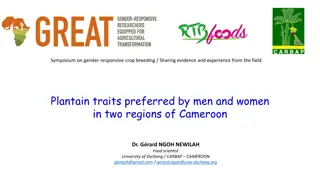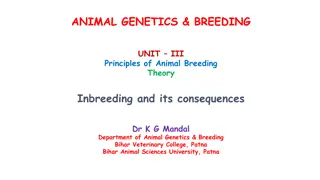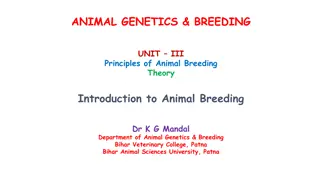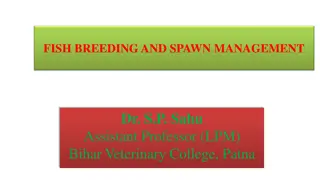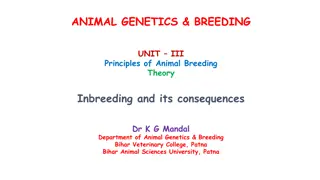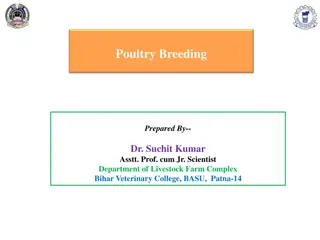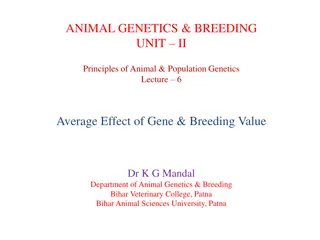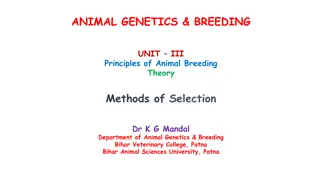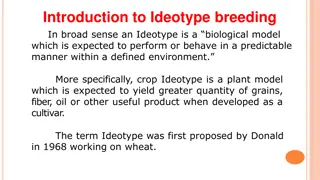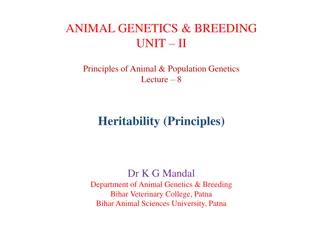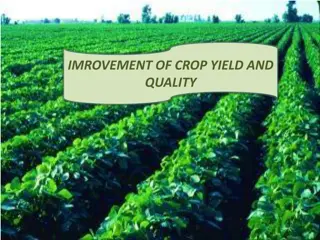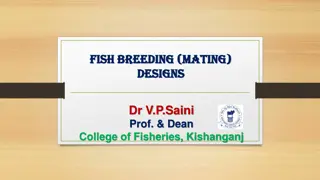Enhancing Crop Yield Through Ideotype Breeding
Ideotype breeding is a strategic approach merging morphological and physiological traits to develop superior plant types for improved yield and product quality. Expert selection, testing, and recombination lead to cultivars resistant to environmental stresses. While ideotype breeding offers significant benefits in breaking yield barriers, it also presents challenges such as integrating diverse traits and time-consuming development processes. Despite its limitations, ideotype breeding remains a valuable tool in addressing agricultural challenges and evolving with changing demands and knowledge.
Download Presentation

Please find below an Image/Link to download the presentation.
The content on the website is provided AS IS for your information and personal use only. It may not be sold, licensed, or shared on other websites without obtaining consent from the author.If you encounter any issues during the download, it is possible that the publisher has removed the file from their server.
You are allowed to download the files provided on this website for personal or commercial use, subject to the condition that they are used lawfully. All files are the property of their respective owners.
The content on the website is provided AS IS for your information and personal use only. It may not be sold, licensed, or shared on other websites without obtaining consent from the author.
E N D
Presentation Transcript
DEFINITION Ideotypes can be defined and tested under current climate conditions and under a climate change scenario. Ideotype is a biological model combining morphological and physiological traits. A crop ideotype is a plant model, which is expected to yield a greater quantity or quality of grain, oil or other useful product when developed as a cultivar.
SELECTION OF IDEAL PLANT TYPE: - Plant combining desirable morphological and physiological traits are selected in segregating population and intermated to achieve the desired plant type. Morphological features are judged through visual observation and physiological parameters are recorded with the help of sophisticated instruments. Screening for resistance to drought, soil salinity, alkalinity, disease and insects is done under controlled conditions. This task is completed with the help of scientist from the disciplines of physiology, soil science, pathology and entomology. Finally, genotypes combining traits specified in the conceptual model are selected, multiplied, tested over several locations, and released for commercial cultivation.
MERITS:- 1. Ideotype breeding is an effective method of enhancing yield through manipulation of various morphological and physiological crop characters. Thus, it exploits both morphological and physiological variation. \ 2. In this method of various morphological and physiological traits are specified and each character or trait contributes towards enhanced yield. 3. Ideotype breeding involves experts from the discipline of plant breeding, physiology, biochemistry, entomology and plant pathology. Each specialist contributes in the development of model plants for traits related to his field. 4. Ideotype breeding is an effective method of breaking yield barriers through the use of genetically controlled physiological variation for various characters contributing towards higher yield. 5. Ideotype breeding provides solution to several problems at a time like disease, insect and lodging resistance, maturity duration, yield and quality by combining desirable genes for these traits from different sources into a single genotype. 6. It is efficient method of developing cultivars for specific or environment.
DEMERITS:- 1. Incorporation of several desirable morphological and physiological and disease resistance traits from different sources into a single genotype is a difficult task. Sometimes, combining of some characters is not possible due to tight linkage between desirable and undesirable characters. Presence of such linkage hinders the progress of Ideotype breeding. 2. Ideotype breeding is a slow method of cultivar development, because combining together of various morphological and physiological features from different sources takes more time than traditional breeding where improvement is made in yield and one or two other characters. 3. Ideotype breeding is not a substitute for traditional or conventional breeding. It is a supplement to the former. 4. Ideotype is a moving object which changes with change in knowledge, new requirements, national policy, etc. Thus new Ideotype have to evolve to meet the changing and increasing demands of economic products.
FUTURE PROSPECTS OF IDEOTYPE BREEDING :- In India, the future research on crop Ideotype should be directed towards following aspects: India has achieved self-sufficient in the production of food grains through modification of plant characters and development of high yielding varieties/ hybrids. The further breakthrough in yield and quality has to be achieved through the exploitation of physiological variation. Ideotype both for high and low input technology condition have to be developed. Crop Ideotype have been developed in cereals and millets. There is ample scope for developing ideal plants or models plants in pulses, oilseeds, cotton and several other field crops. In these crops, again Ideotype have to be evolved both for irrigated as well as rain fed cultivation. In cotton, Ideotype have to be developed for regard to agroclimatic conditions.
